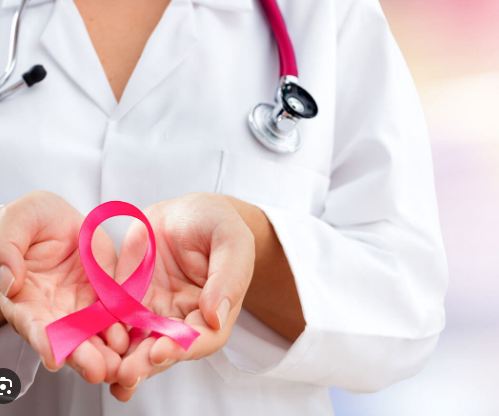Written by Dr. Shazia Asim
Breast cancer is a significant health concern worldwide, and early detection is crucial for effective treatment and improved outcomes. Behind the statistics and risk factors lie countless personal stories of courage and resilience. By understanding the impact of this disease on both individuals and society, we can and should make continued efforts towards improved outcomes of this disease by prevention and early detection.
Firstly, it is essential to acknowledge the glaring statistics surrounding breast cancer. According to global estimates, breast cancer is the most common cancer among women, accounting for approximately one in four cancer diagnoses. In 2020, an estimated 684,996 women across the world died from breast cancer, out of which 56,366 were in Pakistan. These numbers areoverwhelming and they emphasize the need for vigilance and awareness. These statistics are not just numbers; they represent mothers, sisters, daughters, and friends who have been touched by this disease.
Disease like breast cancer brings a sense of uncertainty and fear for those affected. The journey of diagnosis and treatment can be physically and emotionally challenging. The toll it takes on patients and their families cannot be taken lightly. It takes a lot of strength and resilience of individuals facing breast cancer, as they endure surgeries, chemotherapy, radiation, and a myriad of side effects with unwavering determination. In the fight against breast cancer, one of the most powerful weapons we have is knowledge and early detection. Breast self-examination (BSE) is a simple yet crucial practice that empowers individuals to take control of their own health and can help identify potential breast cancer symptoms at an early stage. According to several studies conducted in different cities of Pakistan only 24% of female had heard of breast self-examination. This article is an effort to emphasize the importance of BSE and provide basic information about the signs and symptoms of breast cancer.
Understanding Breast Cancer:
Breast cancer is a malignant growth that occurs in the breast tissue, primarily in the ducts or lobules. It can affect both women and less frequently, men. While various risk factors (being female, old age, dense breast tissue, genetic predisposition, etc) contribute to the development of breast cancer, early detection remains one of the most effective ways to combat this disease.
The Role of Self Breast Examination (BSE):
BSE is a proactive, hands-on approach for individuals to monitor their breast health. It involves regularly checking one’s breasts for any changes or abnormalities. The goal of doing a breast self-exam is recognizing what’s normal for you. Knowing how your breasts typically look and feel can help you notice a change (if one were to occur). Here’s why BSE is crucial:
Early Detection Saves Lives: Breast cancer, when detected at an early stage, is often more treatable, with a higher chance of complete recovery.
Empowerment and Awareness:BSE empowers individuals by allowing them to actively participate in their own health. It fosters awareness of one’s body and helps identify potential issues promptly.
Cost-Effective:BSE doesn’t require any special equipment or medical visits, making it a cost-effective method of monitoring breast health.
Performing Self Breast Examination:
Here are the steps to perform a basic BSE:
Choose a regular time: Pick a specific time each month to perform BSE, ideally a few days after your menstrual cycle ends if you menstruate.
In front of a mirror:
Stand in front of a mirror with your hands on your hips.Look for any changes in breast size, shape, or contour.Check for any skin changes, such as dimpling or redness.Examine the nipples for any discharge or inversion.
Lying down:
Lie down with a pillow under your right shoulder.Use your left hand to examine your right breast.Use the pads of your fingers (not tips) , moving in small circles, to feel for any lumps or irregularities.Cover the entire breast, including the underarm area.Repeat the process for your left breast using your right hand.
Upward motion:
Sit or stand up.Repeat the examination for both breasts using an upward motion.Pay attention to any changes or abnormalities.
Signs and Symptoms of Breast Cancer:
It’s important to be aware of the common signs and symptoms of breast cancer, as early detection relies on recognizing these changes:
Lump or thickening: The most common symptom is a lump or thickening in the breast or underarm area.
Changes in breast Shape or Size: Any unexplained changes in breast shape or size should be examined.
Skin changes: Look for redness, dimpling, or puckering of the breast skin, which may resemble an orange peel.
Nipple abnormalities: This includes nipple discharge (other than breast milk), inversion, or a change in nipple appearance.
Breast pain: While not always a sign of breast cancer, unexplained breast pain or discomfort should be discussed with a healthcare professional.
Swelling: Swelling or inflammation in the breast, especially if it’s only on one side, should be evaluated.
Rash or itchiness: Persistent rash or itchiness around the nipple or breast area requires attention.
Nipple retraction: If your nipple becomes inverted or changes position, it should be examined.
Enlarged lymph nodes: Swollen lymph nodes under the arm or around the collarbone could indicate breast cancer.
Consult a Professional: If you notice any changes, lumps, or persistent symptoms during BSE, consult a healthcare professional for further evaluation.
Breast self-examination is a vital tool for early detection of breast cancer. By performing regular BSE and being aware of the signs and symptoms of breast cancer, individuals can take control of their health and increase the likelihood of detecting breast cancer at an early, treatable stage. Remember, if you notice any changes or abnormalities during BSE, don’t hesitate to seek professional medical advice promptly. Early detection can save lives and improve the chances of successful treatment.
Breast self-examination isn’t just a routine task; it’s an act of self-care. It’s about acknowledging the incredible value of your own life and well-being. By regularly examining your breasts, you are not just checking for lumps or changes – you are affirming your right to a healthy future. In closing, I urge you to make breast self-examination a part of your regular routine. Encourage your friends, family members, and colleagues to do the same. Let’s foster a culture of self-care and awareness, not just during Breast Cancer Awareness Month but throughout the entire year. Together, we can make a difference in the lives of those we love and in our own lives as well.
Written by Dr. Shazia Asim | Professor of pharmacology in a private medical college in Lahore.












